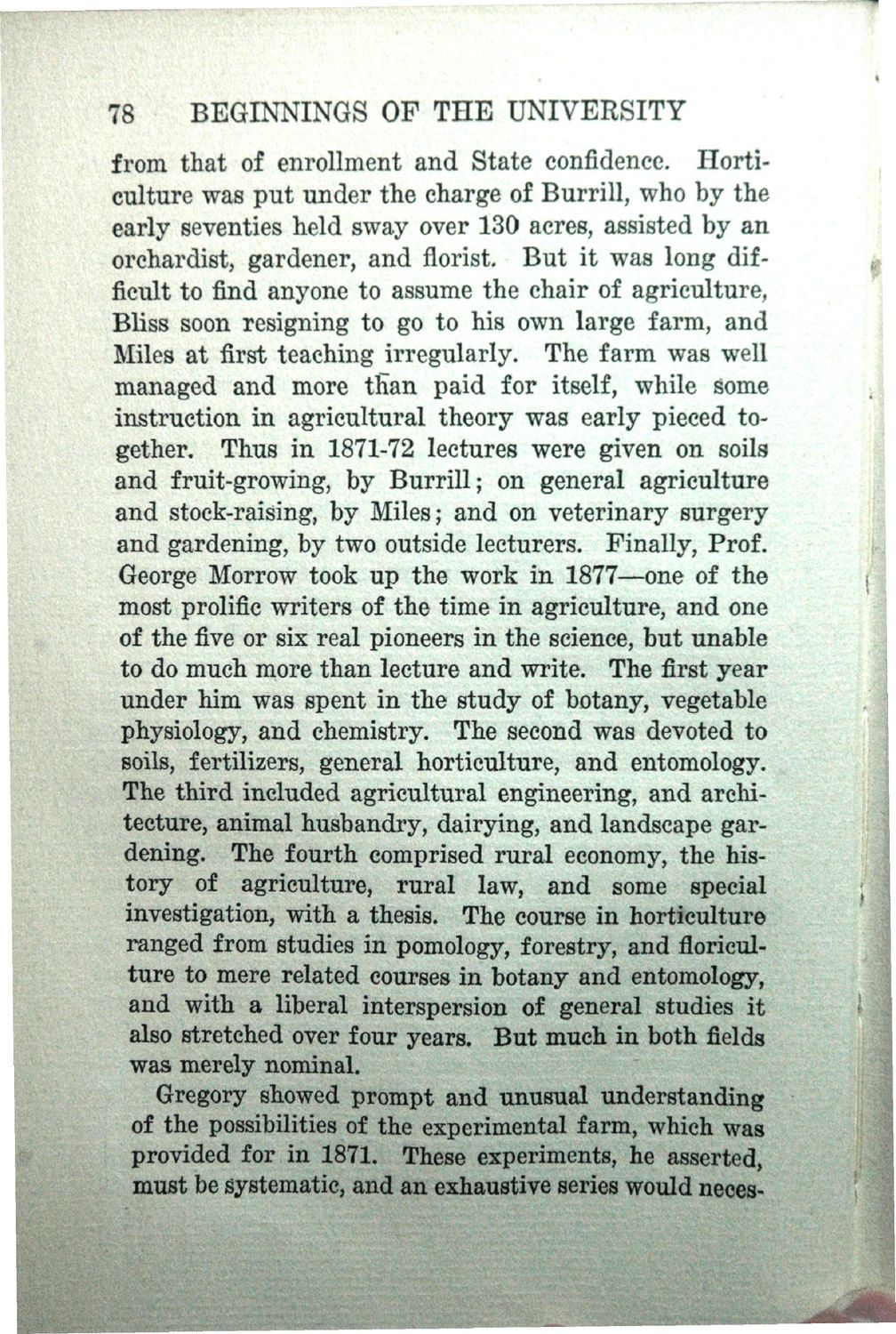| |
| |
Caption: Book - History of the University (Nevins)
This is a reduced-resolution page image for fast online browsing.

EXTRACTED TEXT FROM PAGE:
78 BEGINNINGS OF THE UNIVERSITY from that of enrollment and State confidence. Horticulture was put under the charge of Burrill, who by the early seventies held sway over 130 acres, assisted by an orchardist, gardener, and florist. But it was long difficult to find anyone to assume the chair of agriculture, Bliss soon resigning to go to his own large farm, and Miles at first teaching irregularly. The farm was well managed and more tEan paid for itself, while some instruction in agricultural theory was early pieced together. Thus in 1871-72 lectures were given on soils and fruit-growing, by Burrill; on general agriculture and stock-raising, by Miles; and on veterinary surgery and gardening, by two outside lecturers. Finally, Prof. George Morrow took up the work in 1877—one of the most prolific writers of the time in agriculture, and one of the five or six real pioneers in the science, but unable to do much more than lecture and write. The first year under him was spent in the study of botany, vegetable physiology, and chemistry. The second was devoted to soils, fertilizers, general horticulture, and entomology. The third included agricultural engineering, and architecture, animal husbandry, dairying, and landscape gardening. The fourth comprised rural economy, the history of agriculture, rural law, and some special investigation, with a thesis. The course in horticulture ranged from studies in pomology, forestry, and floriculture to mere related courses in botany and entomology, and with a liberal interspersion of general studies it also stretched over four years. But much in both fields was merely nominal. Gregory showed prompt and unusual understanding of the possibilities of the experimental farm, which was provided for in 1871. These experiments, he asserted, must be systematic, and an exhaustive series would neees-
| |